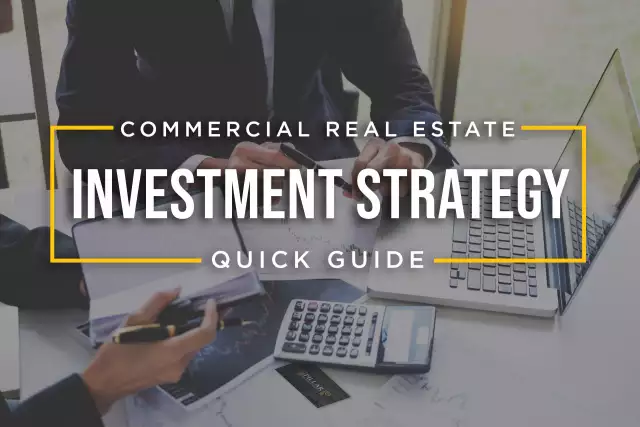A Beginner's Guide to Investing in Commercial Real Estate
A Beginner's Guide to Investing in Commercial Real Estate
Introduction
Commercial real estate refers to properties that are used for business purposes, such as office buildings, retail centers, warehouses, and hotels. These properties can provide a significant source of income for investors, but they also come with their own set of unique challenges and considerations. In this blog post, we will explore the different types of commercial real estate, the factors that drive the market, and the strategies that investors can use to succeed in this industry.
Types of Commercial Real Estate
Office Buildings
Office buildings are perhaps the most common type of commercial real estate. They can range in size from small, single-tenant buildings to large, multi-tenant skyscrapers. Some office buildings are leased to a single tenant, while others are divided into smaller spaces for multiple tenants.
Retail Centers
Retail centers include shopping malls, strip malls, and other types of properties that are leased to retailers. These properties can be highly profitable for landlords, as they often have a high volume of foot traffic and can command premium rent prices.
Industrial Properties
Industrial properties include warehouses, manufacturing facilities, and distribution centers. These properties are typically leased to companies that need space for storage, production, or distribution of goods.
Hotel and Hospitality Properties
Hotel and hospitality properties include hotels, resorts, and other types of properties that are used for overnight accommodations. These properties can be highly profitable, but they also come with a unique set of challenges and considerations, such as the need to constantly update and renovate to stay competitive.
Factors that Drive the Commercial Real Estate Market
Economic Factors
The state of the economy has a significant impact on the commercial real estate market. When the economy is strong, businesses are more likely to expand and invest in commercial properties. Conversely, when the economy is weak, businesses may cut back on their real estate investments.
Interest Rates
Interest rates also play a key role in the commercial real estate market. When interest rates are low, it makes it cheaper for investors to borrow money to purchase properties. This can lead to increased demand for commercial properties and higher prices.
Demographics
Demographics also play a role in the commercial real estate market. For example, if an area has a rapidly growing population, there may be increased demand for retail and office space. On the other hand, if an area is experiencing a population decline, there may be less demand for commercial properties.
Investment Strategies
Value-Add
One popular investment strategy in commercial real estate is to purchase underperforming properties and add value through renovations and improvements. This can include everything from simple cosmetic updates to more extensive renovations, such as building out additional space or reconfiguring floor plans.
Development
Another strategy is to develop new commercial properties from scratch. This can include building new retail centers, office buildings, or industrial properties. This strategy can be highly profitable, but it also comes with a higher level of risk.
Income Producing
An income-producing strategy involves buying commercial properties that generate income from rent. This can include properties such as office buildings, retail centers, and industrial properties. The goal is to generate a steady stream of cash flow from rent, with the potential for appreciation over time.
Profitability of commercial real estate
The profitability of commercial real estate can vary depending on a number of factors, such as location, market conditions, and the specific property type. That being said, some types of commercial real estate are generally considered to be more profitable than others.
One of the most profitable types of commercial real estate is multifamily properties, such as apartments and condominiums. These properties often have a high occupancy rate and can generate a steady stream of rental income. Additionally, they can appreciate in value over time, making them an attractive long-term investment.
Retail properties, such as shopping centers and strip malls, can also be highly profitable, as they often have a high volume of foot traffic and can command premium rent prices. However, the profitability of retail properties can be affected by the changing retail landscape and the growth of e-commerce.
Industrial properties, such as warehouses and distribution centers, can be highly profitable. These properties are typically leased to companies that need space for storage, production, or distribution of goods. The growth of e-commerce, logistics, and supply chain industries has increased the profitability of this type of property.
Office properties, particularly those in prime locations, can also be highly profitable. These properties are often leased to businesses, which can provide a steady stream of rental income. However, the profitability of office properties can be affected by changes in technology and the rise of remote work.
It's important to note that the most profitable type of commercial real estate for an investor will depend on the individual's goals, risk tolerance, and investment strategies.
Q&A
Q: What is the difference between commercial and residential real estate?
A: Commercial real estate refers to properties that are used for business purposes, such as office buildings, retail centers, warehouses, and hotels. Residential real estate refers to properties that are used for housing, such as single-family homes, apartments, and condominiums.
Q: What are the most common types of commercial real estate?
A: The most common types of commercial real estate are office buildings, retail centers, industrial properties, and hotel and hospitality properties.
Q: How do interest rates affect the commercial real estate market?
A: When interest rates are low, it makes it cheaper for investors to borrow money to purchase properties. This can lead to increased demand for commercial properties and higher prices. Conversely, when interest rates are high, it makes borrowing more expensive and can lead to decreased demand for commercial properties and lower prices.
Q: What are some common investment strategies for commercial real estate?
A: Some common investment strategies for commercial real estate include value-add, development, and income-producing.
Q: What are some of the risks associated with commercial real estate investing?
A: Some of the risks associated with commercial real estate investing include fluctuations in the economy, changes in interest rates, and the potential for a decrease in demand for commercial properties in a certain area. Additionally, commercial properties often require a significant amount of capital and may come with higher management and maintenance costs than residential properties.
Conclusion
Commercial real estate can be a highly profitable investment, but it also comes with its own set of unique challenges and considerations. By understanding the different types of commercial properties, the factors that drive the market, and the strategies that investors can use to succeed, investors can make informed decisions and maximize their returns.







